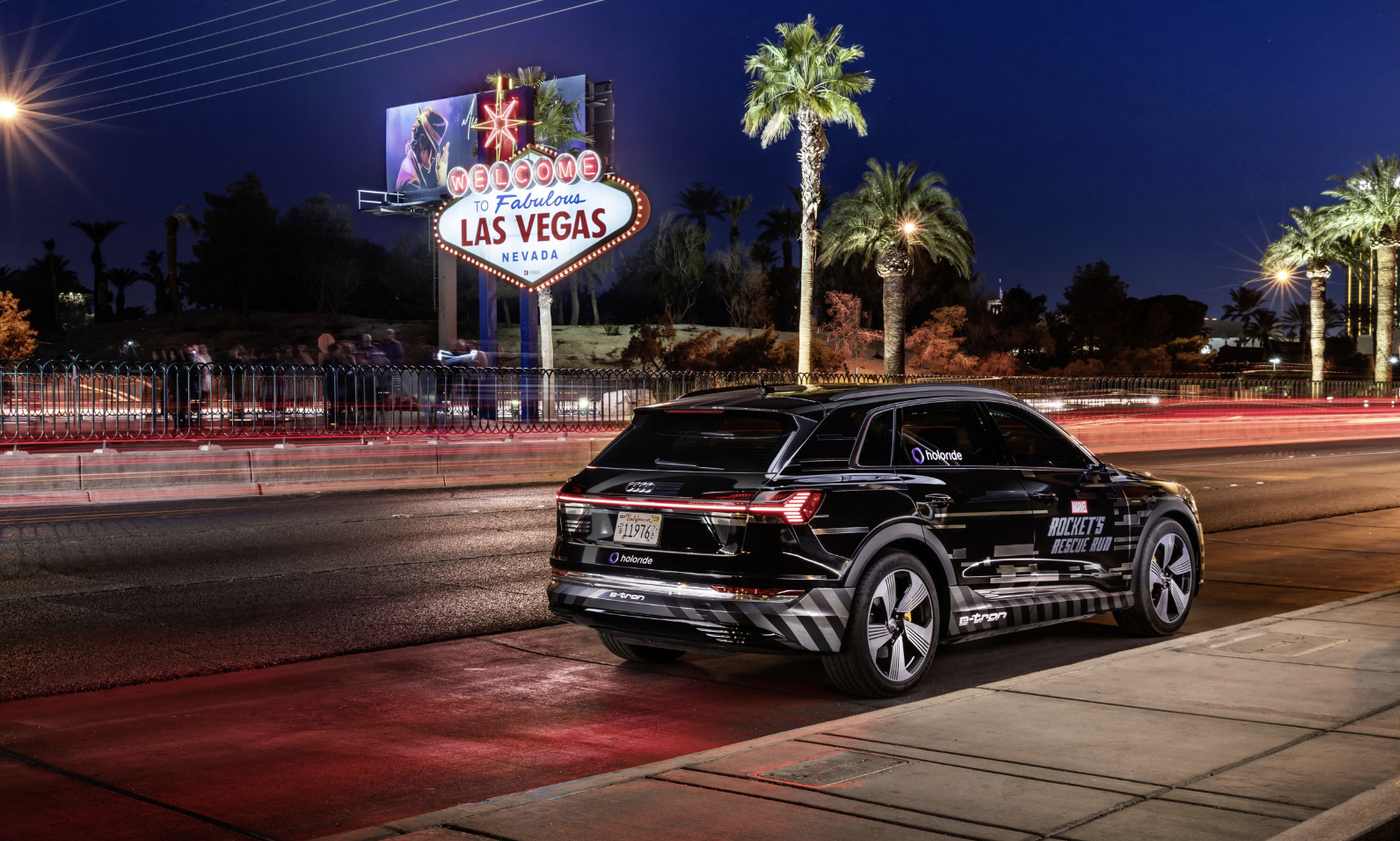Audi turns a sedan into a moving VR theater - and promises no motion sickness
Most parents will be familiar with the calls of 'are we there yet' coming from their children in the back seats of a long car journey. Now, to help alleviate their boredom, Audi has created a virtual reality experience which promises to entertain without making your kids feel queasy.
The German automaker showed off the new VR system at the CES technology show in Las Vegas. The first piece of content developed specifically for this system is called Marvel Avengers: Rocket's Rescue Run, and promises to precisely match the vehicle's own movements with that of the VR to help prevent motion sickness.
Read More:
Audi admits that you can't please absolutely everyone when it comes to VR - even when headsets are worn while sitting stationary. But the company claims that, thanks to a system which closely mirrors the car's own movements in the VR experience, wearers can enjoy the system without feeling unwell.
The technology is developed by a new startup co-founded by Audi, called Holoride, and aims to produce an entire new form of personal entertainment.
The VR experiences created for Audi by Holoride can show a wide range of content, but always via a virtual environment which matches the directional movements of the car. Audi explains: "From arcade games, underwater adventures and space exploration to educational trips through historical cities or the human bloodstream, there are almost no limits to what is possible."
Essentially, as long as the experience is centered around forwards movement - the same as the car - then the experience can be made to work. Audi also says it is exploring ways to use the car's navigation system to predict how the vehicle will move in upcoming turns, so the VR experience can be ready to take wearers in the same direction as the road ahead.
The company added: "Since the visual experience and the user's actual perception are synchronized, conventional movies, series or presentations can also be viewed with a significantly reduced chance of motion sickness."
On its stand at CES, Audi showed off the technology without VR headsets, but instead with a vehicle which showed the experience on its front and rear TV screens, and moved around using its air suspension. GearBrain tried out the experience and found the movements of the car - forwards, backwards, left and right - closely matched the footage shown.
Along with cinema-style surround sound coming from the car's stereo system, the movement felt like it complemented the visual aspect of the demonstration. Of course, it's one thing to watch screens in a stationary car for just a minute or so, but it will be quite another to try out VR experiences in a moving vehicle.
Audi says its Holoride startup "intends to launch the new form of entertainment on the market within the next three years using standard VR glasses for backseat passengers. In the long term, the continued expansion of car-to-X infrastructure could also see traffic events becoming a part of the experience: Stopping at traffic lights could introduce unexpected obstacles to a game or interrupt a learning program with a quick quiz."
